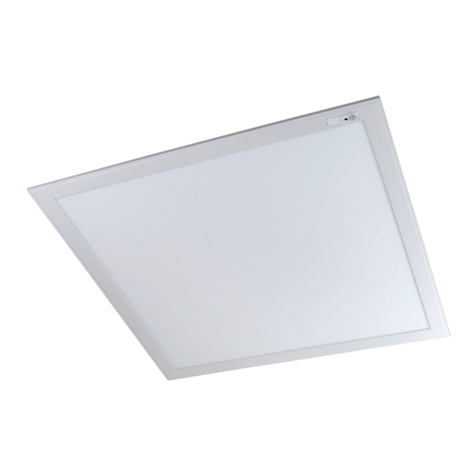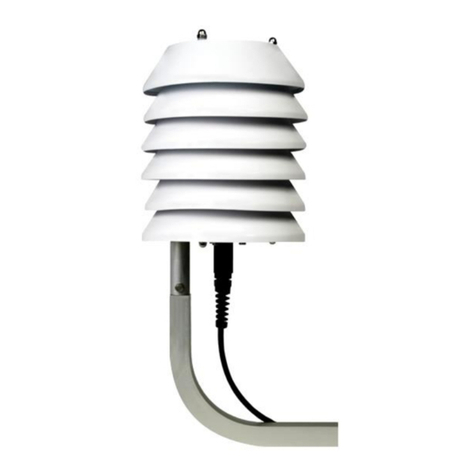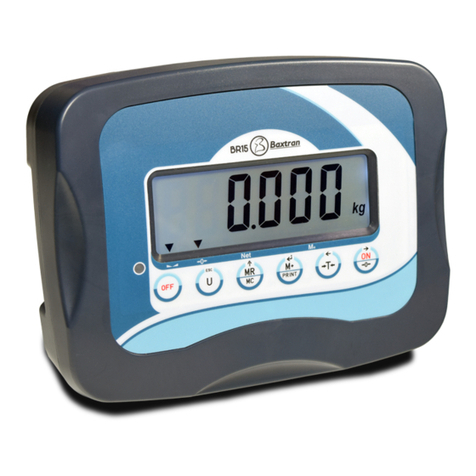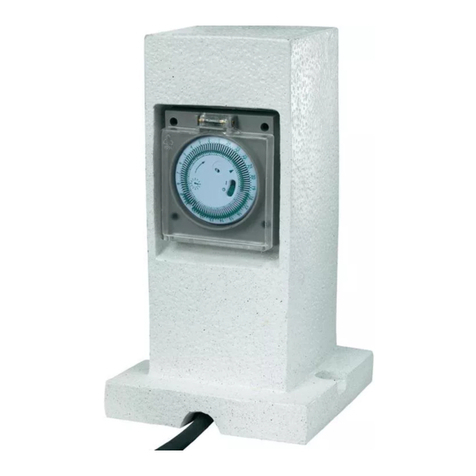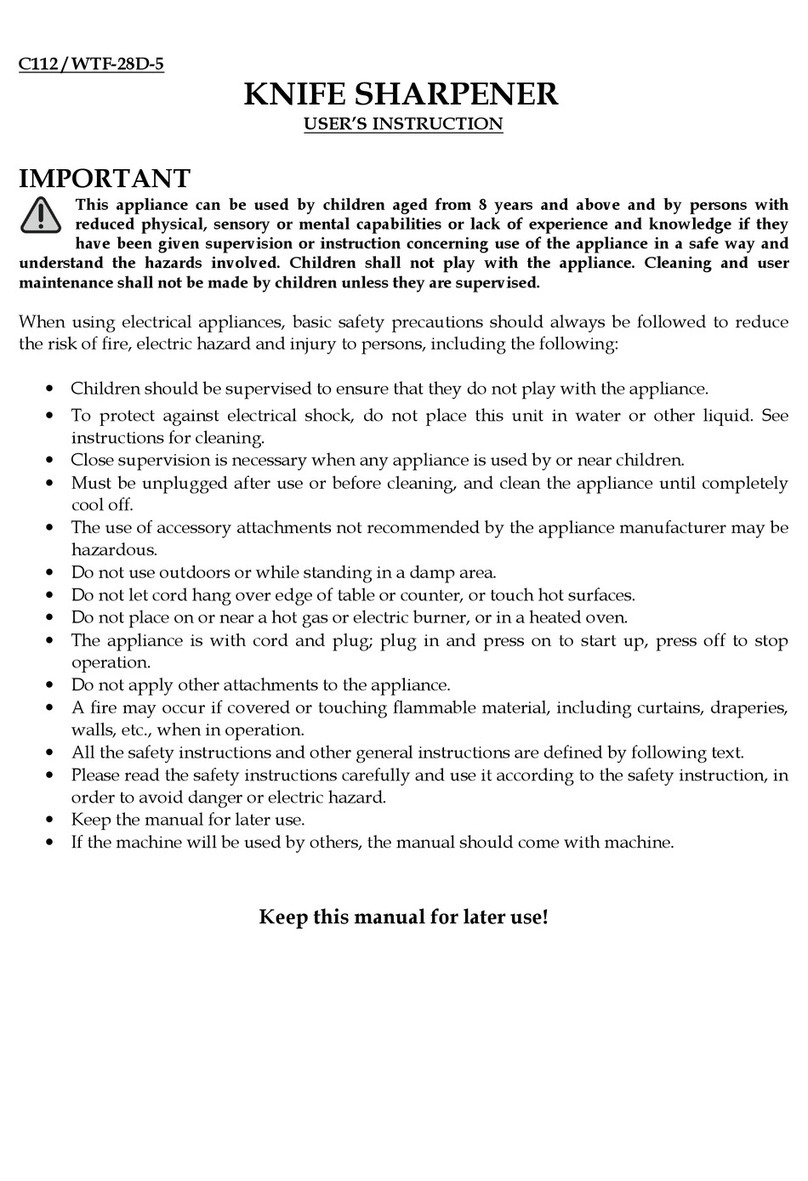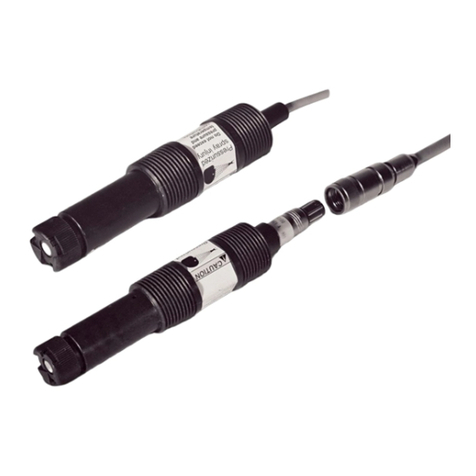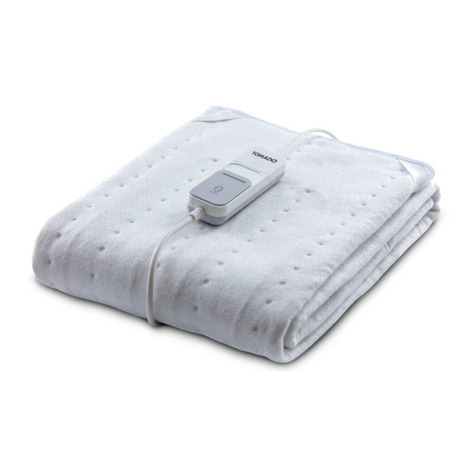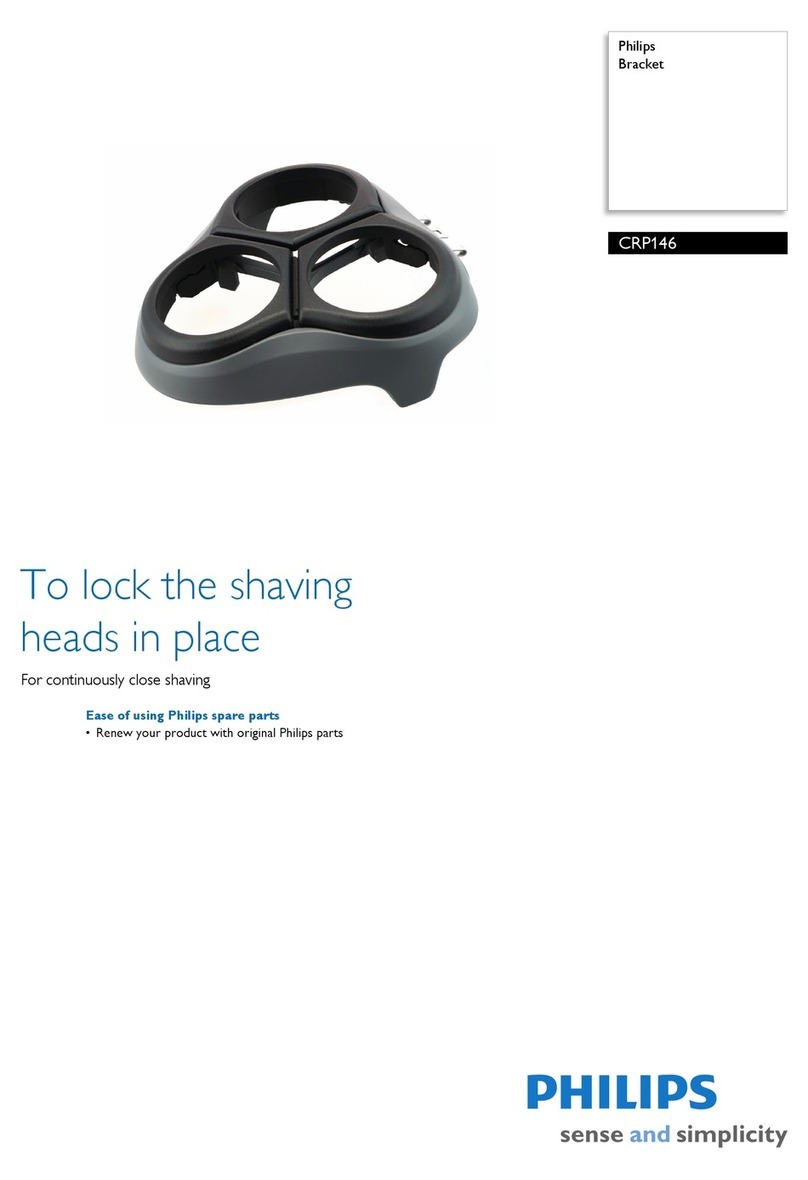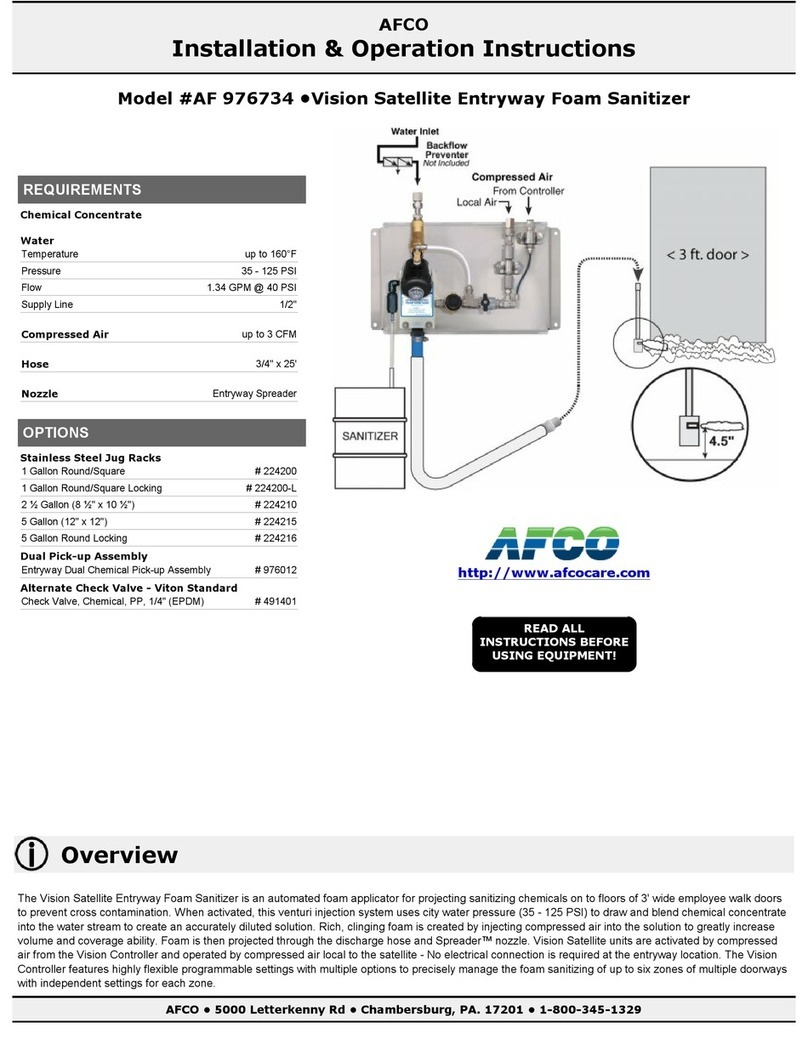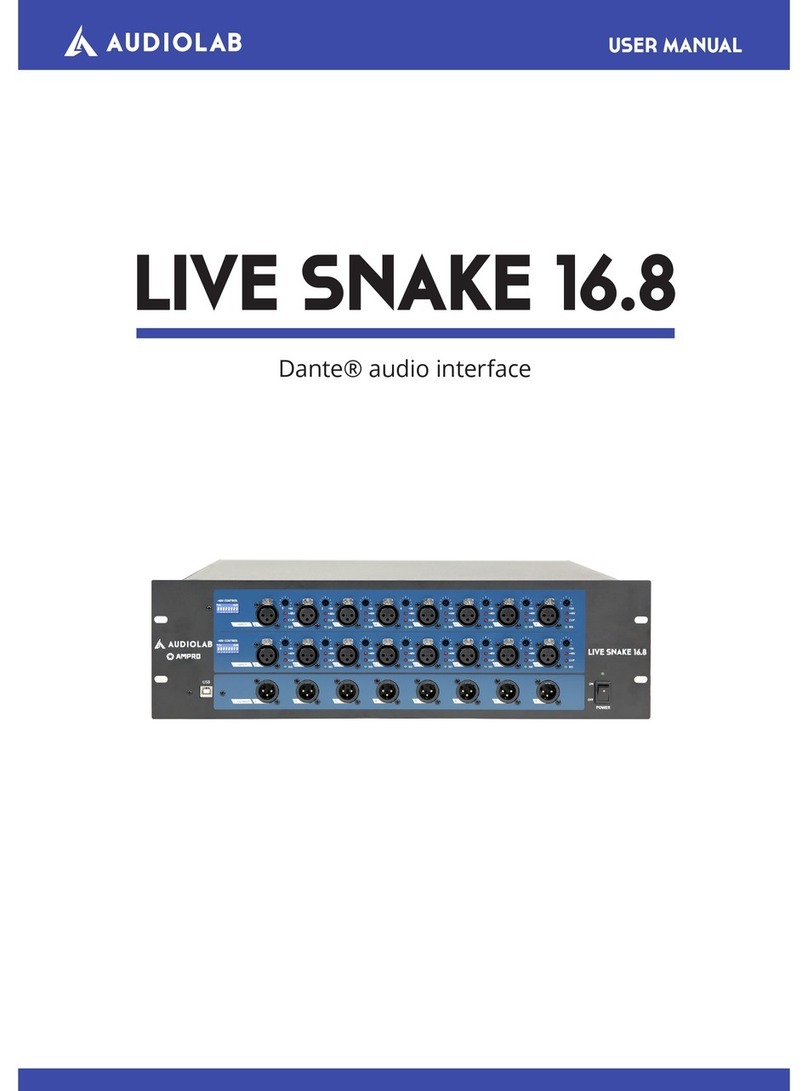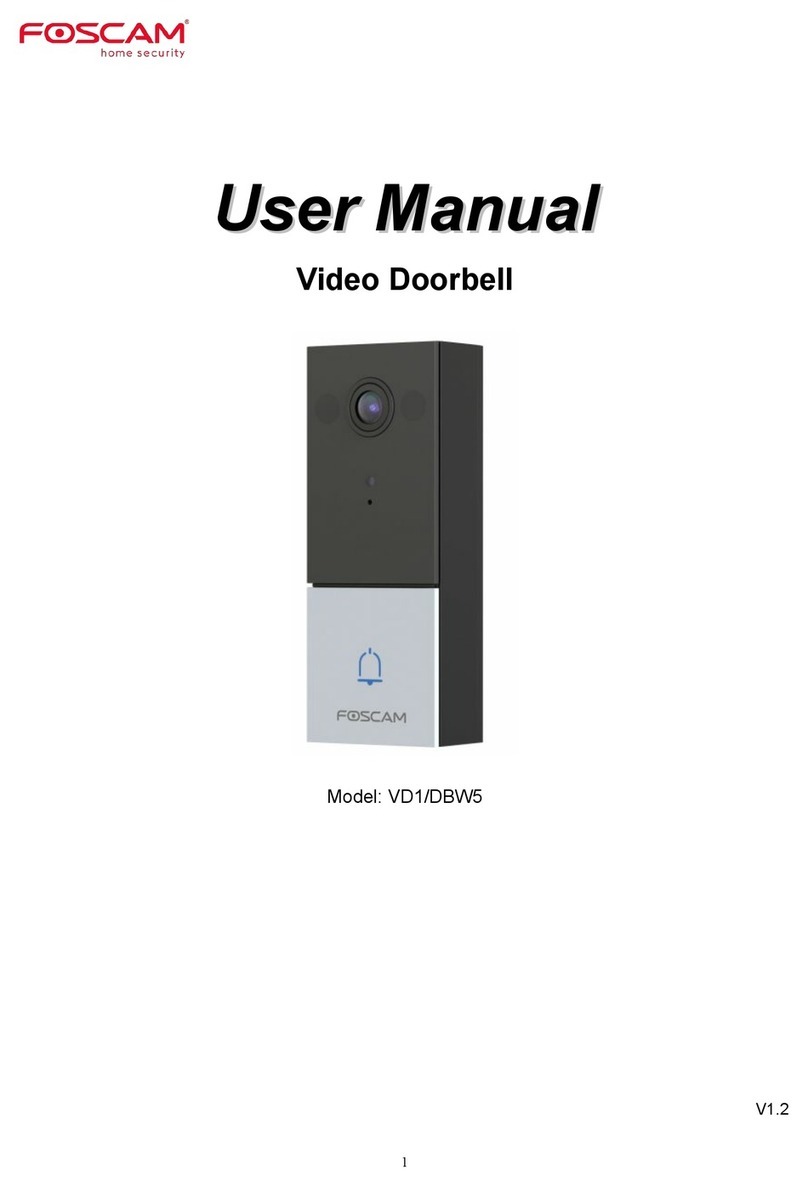Geolux LX-80-15 User manual

Copyright ©2022 Geolux d.o.o. All rights reserved.
LX-80-15 10 Hz
Oceanographic Radar Sensor
User Manual
v2.4.1

Starting Point
Thank you for purchasing the Geolux LX-80-15 10 Hz non-contact oceanographic radar sensor!
We have put together the experience of our engineers, the domain knowledge of our customers,
the enthusiasm of our team, and the manufacturing excellence to deliver this product to you.
You may freely rely on our eld-proven radar technology. The use of top-quality components and
advanced signal processing algorithms ensures that the Geolux oceanographic radar sensor can
be used in various applications and environments.
We have created this User manual in order to assist you with setting up and using the Geolux
instrument.
Should there be any questions left unanswered, please feel free to contact us directly:
Geolux d.o.o.
Ljudevita Gaja 62
10430 Samobor
Croatia
E-mail: [email protected]
Web: www.geolux.hr

Contents
1. Introduction 1
2. Electrical Characteristics 2
3. Connector Pin-Out 3
3.1. Serial RS-232 Interface 4
3.2. Serial RS-485 Interface 4
3.3. CAN Communication Interface (Optional) 5
3.4. Analog 4 – 20 mA Output 5
3.5. SDI-12 Interface 6
4. Installing the Oceanographic Radar Sensor 7
4.1. Measurement Through Materials (Containers) 9
4.2. Rain and Wind 9
4.3. Interference and Multiple Radars 9
4.4. Fogging and Evaporation 10
4.5. Reections 10
4.6. Relative Measurement 10
4.7. Units 11
4.8. Radar Calibration 11
5. Wave and Tide Measurement 12
5.1. Signicant Wave Height 12
5.1.1. Signicant Wave Height as an Average of 1/3 of Highest Waves - H1/3 12
5.1.2. Signicant Wave Height Calculated from Standard Deviation - HS 12
5.1.3. Signicant Wave Height Calculated from Spectral Moment - HS_M0 12
5.2. Wave Periods 13
5.2.1. Zero Up-Crossing Period Calculated from Time-Domain Data - TZUC 13
5.2.2. Zero Up-Crossing Period calculated from the Power Spectrum - TZUC_SPEC 13
5.2.3. Crest Period Calculated from Time-Domain Data - TCREST 13
5.2.4. Crest Period Calculated from the Power Spectrum - TCREST_SPEC 13
5.2.5. Peak Wave Period - TPEAK 14
5.3. Statistical Level Measurements 14
5.3.1. Minimum Water Level - LMIN 14
5.3.2. Maximum Water Level - LMAX 14
5.3.3. Mean (Average) Water Level - LMEAN 14
5.3.4. Median Water Level - LMED 14

6. Radar Settings 15
7. Data Interface 23
7.1. Serial RS-232 Interface 23
7.2. Serial RS-485 Interface 23
8. Data Protocols 24
8.1. NMEA Protocol (RS-232) 24
8.2. Servicing Protocol (RS-232) 26
8.3. Modbus Protocol (RS-485) 33
8.4. SDI-12 Protocol 40
9. Geolux Instrument Congurator 46
10. Troubleshooting 50
11. Appendix A – Mechanical Assembly 57

LX-80-15 10 Hz User Manual
1
LX-80-15 10 Hz Oceanographic Radar Sensor
1
Introduction
Geolux LX-80-15 10 Hz oceanographic radar sensor uses radar technology to provide precise
contactless measurement of water level. Contactless radar technology enables quick and simple
sensor installation above the water surface and requires minimum maintenance. This functionality
is achieved by transmitting a frequency-modulated electromagnetic (radio) wave in 80 GHz
frequency range (W band), and measuring the frequency shift of the electromagnetic wave
reected from the water surface.
Measured distance from the sensor to the water surface is proportional to the frequency difference
between the transmitted and received signal. The radar periodically transmits a linear chirp
ranging in frequency from 77 GHz to 81 GHz. As the distance between the radar and water
increases, so does the difference between the transmitted and received frequency, enabling the
level meter to precisely determine the distance between the sensor and the water. The radio signal
modulation and detection algorithms used in the sensor allow very precise measurements that are
not dependent on air temperature, humidity, or other parameters of the environment.
The oceanographic radar sensor is able to detect objects at distances ranging from 0.2 m to 15 m
and reports 10 level measurements per second (10 Hz) for advanced wave analysis.

LX-80-15 10 Hz User Manual
2
LX-80-15 10 Hz Oceanographic Radar Sensor
2
Electrical Characteristics
The electrical characteristics of the Geolux LX-80-15 10 Hz oceanographic radar sensor are given
in Table 1.
Table 1. Electrical Characteristics
Parameter MIN TYP MAX Unit
Communication interface:
RS-232 interface speed
RS-485 interface speed
9600
9600
115200
115200
bps
bps
Radar Sensor
Frequency
Beam-width (3dB) – Azimuth
Beam-width (3dB) – Elevation
77.000
5 (±2.5)
5 (±2.5)
81.000 GHz
°
°
Power supply voltage 9.0 12.0 27.0 V
Power
Operational
Standby mode
Sleep mode
360
150
30
600 mW
mW
mW
Operational temperature range -40 +85 °C
Measurement range 0.2 15 m
Accuracy 2 mm
Resolution 0.5 mm
Ingress Protection Rating IP68
Mechanical ф65 x H78 mm

LX-80-15 10 Hz User Manual
3
LX-80-15 10 Hz Oceanographic Radar Sensor
3
Connector Pin-Out
The oceanographic radar sensor uses robust IP68 circular M12 connector with 12 positions and a
mating cable, both delivered standardly with the instrument. The connector and cable details are
shown in Picture 1 while Table 2 gives a detailed description of each pin.
Picture 1. Level Meter Connectors
Table 2. Connector and Cable Pin-out
Pin No. Wire Color Pin Name Pin Description
1 White GND This pin should be connected to the ground (neg-
ative) pole of the power supply.
2 Brown +Vin This is the pin with the instrument’s power supply.
The level meter power supply voltage must be
between 9 VDC to 27 VDC, and the power supply
must be able to provide at least 0.65 W.
3 Green RS232 – TxD RS-232 data transmit signal.
4 Yellow RS232 – RxD RS-232 data receive signal.
5Grey GND Signal ground.
6 Pink CAN – H CAN2.0B high signal. (optional)
7 Blue CAN – L CAN2.0B low signal. (optional)
8 Red V+ Output power supply (+Vin) for supply of exter-
nal optional equipment and for use with analog
4 – 20 mA output.
9 Orange RS485 – D- RS-485 data transmitter/receiver low signal.
10 Dark Red RS485 – D+ RS-485 data transmitter/receiver high signal.
11 Black SDI-12 SDI-12 communication interface.
12 Purple 4 – 20 mA Output Analog 4 – 20 mA output.

LX-80-15 10 Hz User Manual
4
LX-80-15 10 Hz Oceanographic Radar Sensor
Picture 2. Serial RS232 DB-9 Cable
3.1. Serial RS-232 Interface
Serial RS-232 interface is implemented as standard PC full-duplex serial interface with voltage
levels adequate for direct connection to PC computers or other embedded devices used for serial
RS-232 communication.
When the RS-232 interface is connected to a standard DB-9 PC connector, TxD line (green wire)
is connected to pin 2 and RxD (yellow wire) is connected to pin 3. In order for the serial interface
to operate properly, an additional connection of signal GND (grey wire) is needed on pin 5 of the
DB-9 connector. Optionally, Geolux can supply a cable with DB-9 connector connected to the
cable. This requirement must be specied when placing an order.
Several communication protocols are available. Additional custom protocols can be implemented
on request. Detailed description of communication protocols is given in chapter 8 of this user
manual.
3.2. Serial RS-485 Interface
Serial RS-485 interface is implemented as standard industrial half-duplex communication
interface. The communication interface is internally short-circuited, and overvoltage protected.
Depending on the receiving device, the interface can be used with only two wires (D+ dark red
wire & D- orange wire) while in some cases the ground connection (signal GND grey wire) is also
required. For more details please consult receiver specication.
The most common communication protocol used with RS-485 interface is Modbus-RTU, but other
protocols are also available on request. Detailed description of communication protocols is given in
chapter 8 of this user manual.

LX-80-15 10 Hz User Manual
5
LX-80-15 10 Hz Oceanographic Radar Sensor
3.3. CAN Communication Interface (Optional)
CAN communication interface is an optional communication interface that can be used for
special applications. This interface is a higher speed interface (up to 1 Mbps) than other serial
communication interfaces, thus enabling additional data transfer which would otherwise not be
possible with RS-232 and RS-485 interfaces.
CAN interface is disabled in the default sensor version - for additional features using CAN
interface please contact technical support.
3.4. Analog 4 – 20 mA Output
Analog current 4 – 20 mA output is provided for easier compatibility with older logging and control
systems. Output is implemented as current sink architecture with common ground. Maximal
voltage applied to the sink can go up to 30 VDC, providing greater exibility in connection of the
sensor to PLCs, loggers, or data concentrators.
Signal range and function for 4 – 20 mA analog output can be congured in the setup application
so the sensor will be able to signal best suitable value range with available current range. Current
step in the sensor is 0.3 µA, which limits the resolution, so care must be taken while setting the
minimal value to be represented by 4 mA and the maximal value to be represented by 20 mA, so
the resolution is sufcient for the system requirements.
Measurement of the current by the client device (logger, PLC, modem etc.) must be implemented as
the high side current measurement as shown in Picture 4. If a sensing resistor is used, resistance
should be selected from the range of 10 Ω up to 500 Ω, with a recommended value of 100 Ω for
the sensing resistor.
Picture 3. Analog 4 – 20 mA Output Internal Architecture

LX-80-15 10 Hz User Manual
6
LX-80-15 10 Hz Oceanographic Radar Sensor
Picture 4. High Side Current Measurement for the 4 – 20 mA Analog Output
3.5. SDI-12 Interface
SDI-12 interface is widely used to connect hydrological equipment to dataloggers. SDI-12 uses a single
communication line, and very slow speed communication to enable the use of very long communication
cables.
For hydrological applications, SDI-12 communication interface is a valid option and the instrument is
natively able to communicate directly with SDI-12 master devices (dataloggers etc.).

LX-80-15 10 Hz User Manual
7
LX-80-15 10 Hz Oceanographic Radar Sensor
4
Installing the Oceanographic
Radar Sensor
The oceanographic radar sensor must be installed above the water surface, pointing directly towards
the water surface. The minimum distance between the sensor and the water surface must not be less
than 0.2 m. It is recommended to keep the distance between the sensor and the water surface at least 1
metre. The sensor should be directed at a 90° angle relative to the water surface. To simplify instrument
installation, the sensor reports its tilt angle over communication interfaces. The eld technician can use
the PC application to connect to the sensor and check that the tilt angle of the unit is 0° (so that the
angle between the radar beam and the water surface is 90°).
When mounting the sensor, special care must be taken to ensure that a direct non-obstructed line to
the water surface is available. Any close object in the vicinity of the sensor can reduce accuracy and
introduce offsets or errors in measurements.
Vibrations of the mounting structure can also affect measurements and should be reduced by any
applicable means.
Picture 5. shows how the radar should be positioned relative to the water surface.
The radar beam transmitted from the sensor covers a circular area on the water surface. The sensor
works best when the water is calm and the surface is smooth, because at surfaces give optimum
reection of the radar beam. As the radar beam width is dened by 3 dB width angle, the diameter
of the pattern on the water surface is dependent on the distance between the water surface and the
sensor. Calculation of the size of circular pattern on the water surface is calculated and presented in
Table 3.

LX-80-15 10 Hz User Manual
8
LX-80-15 10 Hz Oceanographic Radar Sensor
Height [m] Diameter [m]
0.3 0.03
0.5 0.04
1 0.09
2 0.17
3 0.26
4 0.35
5 0.44
6 0.52
7 0.61
8 0.70
Water surface directly below the sensor should be void of vegetation, rocks, sand deposition or other
obstacles that could affect measurements. Geolux LX-80-15 10 Hz has built-in advanced signal
processing algorithms that detect interferences coming from objects close to the water surface, but
these algorithms have some limitations. The performance of interference reduction algorithms is further
limited when the instrument vibrates due to improper mounting. Best results will be achieved when the
measurement location is selected in the recommended way.
If there is slight or moderate roughness (waviness) of the water surface below the sensor, the amount
of reected radar signal will be reduced. This will reduce SNR (Signal to Noise Ratio) on the radar echo
curve, but in most cases won’t affect measurement accuracy. Strong turbulent ow, with high water
roughness, will reduce measurement accuracy due to the unpredictability of the water surface. To
improve measurement accuracy in such conditions it is recommended to congure the radar sensor
averaging lters to calculate an average level over multiple measurements. If the measured level is
highly turbulent, the length of the averaging lter can be adjusted to lter out most, if not all turbulences.
Height [m] Diameter [m]
9 0.79
10 0.87
11 0.96
12 1.05
13 1.14
14 1.22
15 1.31
20 1.75
25 2.18
30 2.62
Table 3. Relationship Between Height from the Water Surface and Diameter of the Radar Beam

LX-80-15 10 Hz User Manual
9
LX-80-15 10 Hz Oceanographic Radar Sensor
4.1. Measurement Through Materials
(Containers)
Geolux LX-80-15 10 Hz instrument uses microwave radar for distance measurement. Microwave
signals easily pass through most dielectric (non-conductive) materials, so it is possible to mount
the radar outside of the container and measure the level of the liquid inside of it. Dielectric
materials commonly used in the industry and buildings, such as ABS, PVC, Nylon, PTFE (Teon),
Polycarbonate, Plexiglas, Polyamide, Polypropylene etc., are very suitable for microwave level
measurement from outside of the containers. In such applications, the instrument can be placed
above the container and pointed at the liquid inside of it.
4.2. Rain and Wind
Geolux LX-80-15 10 Hz instrument has integrated internal software lters to lter out effects of
rain, fog or wind on radar distance measurements. These lters, however, have some limitations.
The majority of measurement inaccuracies caused by environmental factors can be solved by
proper sensor installation.
For rain and snow suppression, the most effective solution is to mount the radar so that it points
directly to the water surface. As rain or snow fall, they affect the water surface, so it is not as
reective as when there is no precipitation, thus reducing the SNR of the returned radar signal.
However, Geolux LX-80 level meters are tested and calibrated to measure the distance to the
water level surface even under heavy rainfall.
Inuence of the wind on the accuracy is in most cases neglectable. The only exception is strong
wind which creates surface waves that can be detected as a shift in water level. To compensate
for this effect, it is recommended to increase the length of the averaging lter on the radar sensor,
so that it reports an average measurement over a longer period of time.
4.3. Interference and Multiple Radars
The distance measurement radar operates in W-band from 77 GHz to 81 GHz with linear
frequency modulation, modulating the signal continuously in the aforementioned frequency range.
For interference between two or more sensors to occur, it would be required to keep their central
frequencies very precise and the timing synchronization of radars should be kept in the range of 25
ns to each other. Such synchronization is very complex to achieve so the interference probability
between several radars on the same location is very small.
It is possible that some wideband radiation sources can introduce small and impulse interferences
for a short period of time, but this should not, or is very unlikely to affect measurements reported
by radar sensor.

LX-80-15 10 Hz User Manual
10
LX-80-15 10 Hz Oceanographic Radar Sensor
4.4. Fogging and Evaporation
Generally, radar sensors are not affected by fog or evaporation of water unless very heavy evaporation
is present and water density in the air is very high.
The best solution for distance measurement is, in most cases, to increase the average period of the
averaging lter. As evaporation is naturally a turbulent event with signicant difference in density over
the surface area and in time, averaging of the distance measurement spectrum solves the accuracy
problem in such conditions.
4.5.Reections
Water reects radar signals very well, which means most of the power of a wave transmitted from the
radar transmitter will be reected from the surface of the water.
Reections of the radar transmitted power beam follow the same physical laws as in optics, and every
time a radar beam hits the water surface, part of the power is reected away from the radar, part of
the power is reected towards the radar, and only a small part of the power is absorbed by the water.
Depending on the surface roughness and incident angle, the ratio between power reected in the
direction away from the radar and in the direction back towards the radar can signicantly vary. As
incident angle for radars in xed, only the roughness of the surface determines the ratio in this case.
In the case of level meters where the incident angle of the transmitted radar beam to the water is
around 90°, most of the power is reected back to the sensor and only a small portion of the transmitter
power will be dispersed in all directions. The ratio between the power reected to the sensor and the
power dispersed in all directions is dependent on the surface roughness but generally, a very small
amount of energy is dispersed, and it is very unlikely that the dispersed energy will cause additional
multipath problems due to more reections from surrounding objects.
4.6. Relative Measurement
Each sensor unit measures the distance between the sensor and the rst detected object. For water
level measurement, it is preferred to report the actual water level from the bottom of the riverbed to
the surface of the water. That is why we offer relative measurement, which is calculated relative to the
mounted sensor height. Sensor height is dened as the distance from the mounted sensor position to
the bottom of the riverbed. This distance is a xed value unique to every mounted unit. It can be set in
two ways.
First is by setting the sensor height parameter directly using any of the communication protocols
described in the following sections. After setting the sensor height, the relative measurement will be
calculated according to the following formula:
RM=SH-D,
where:
RM= relative measurement,
SH=sensor height,
D=measured distance from the sensor to the water.

LX-80-15 10 Hz User Manual
11
LX-80-15 10 Hz Oceanographic Radar Sensor
For example, if the sensor is mounted 6.35 m above the riverbed, and the measured distance from
the sensor to the surface is 4.34 m, then the real water level is calculated as the difference of these
two values: 6.35 m – 4.34 m = 2.01 m.
In this case the sensor will report 4.34 m as the measured level and 2.01 m as the measured
relative level.
Alternatively, it is possible to set the sensor height indirectly, using the staff gauge measurement.
In this case, the staff gauge measurement needs to be taken directly underneath the position
of the mounted sensor. When setting the sensor height using staff gauge height, the following
formula will be used to calculate the sensor height:
SH=D+SG,
where:
SH=sensor height,
D=measured distance from the sensor to the water,
SG=staff gauge measurement.
For example, the sensor is mounted at an unknown height above the riverbed and using a staff
gauge it is determined that the water level at that given time is 1.34 m. The sensor detects water
at the distance of 6.02 m. By setting the value 1.34 m as the staff gauge measurement at the same
time when the device measures the distance as 6.02 m, the sensor height will be calculated as the
sum of these two values: 6.02 m + 1.34 m = 7.36 m.
In this case, the sensor will report 6.02 m as the measured level and 1.34 m as the measured
relative level.
4.7. Units
Default measurement unit of the LX-80-15 10 Hz is millimetres. It is possible to change the
measurement unit of the device using any of the aforementioned communication protocols. The
following measurement units are supported: millimetres, centimetres, metres, feet and inches.
When changing the unit of the device, special care must be taken when setting new parameter
values to the device as the device will now use the selected measurement unit for every
measurement and every measurement parameter.
4.8. Radar Calibration
The level meter is able to perform self-calibration which calibrates the radar transceiver
electronics. Each instrument is calibrated in the factory, and the factory calibration parameters are
stored in the device. Typically, there is no need to repeat self-calibration, even after using the level
meter over several years. In extremely rare cases, when troubleshooting the level meter that is not
accurately measuring the water level, it is recommended to redo the self-calibration. The self-
calibration can be triggered by clicking on Recalibrate radar button which is visible in the Settings
view of the Geolux Instrument Congurator application.

LX-80-15 10 Hz User Manual
12
LX-80-15 10 Hz Oceanographic Radar Sensor
5
Wave and Tide Measurement
The Geolux LX-80-15 10 Hz oceanographic radar sensor makes water level measurements at 10
Hz sampling rate, as opposed to the standard version which makes one measurement per second
(1 Hz sampling rate).
The radar sensor calculates the wave and tide parameters based on the continuous readings of the
water level over a dened time period. The time period is congurable, and is congured by setting
the number of level measurements. For example, if the wave parameters should be measured over 1
minute, then the Wave Analysis Length parameter should be congured to 600 (10 measurements per
send multiplied by 60 seconds).The maximum period is 6 minutes, which corresponds to Wave Analysis
Length of 3600.
The radar sensor calculates and reports the following wave parameters in addition to the
measurements reported by the standard version of LX-80 water level meter.
5.1.SignicantWaveHeight
5.1.1. SignicantWaveHeightasanAverage
of1/3ofHighestWaves-H1/3
The original method for calculating the signicant wave height analyses the time-domain water level
measurements. From the time-domain water level measurements, it calculates the individual wave
heights, then takes one-third of the highest individual waves and calculates their average value.
5.1.2. SignicantWaveHeightCalculated
fromStandardDeviation-HS
A more modern method calculates the wave height from the time-domain water level measurement
data by calculating the standard deviation of the water level measurements, and multiplying the
standard deviation by 4.
5.1.3. SignicantWaveHeightCalculated
fromSpectralMoment-HS_M0
The third method for signicant wave height calculation uses the zero moment (M0) of the power
spectrum.

LX-80-15 10 Hz User Manual
13
LX-80-15 10 Hz Oceanographic Radar Sensor
5.2. Wave Periods
5.2.1. Zero Up-Crossing Period Calculated
from Time-Domain Data - TZUC
The zero up-crossing period can be calculated from time-domain measurements of the water level data,
by counting the number of times that the water level crosses the mean level upwards, and then by
dividing the total measurement time by the number of counted zero up-crosses.
5.2.2. Zero Up-Crossing Period calculated
from the Power Spectrum - TZUC_SPEC
Another method uses moments of the power spectrum of the water level measurements to calculate
the zero up-crossing period using the following formula, where M0and M2are the zeroth and second
spectral moment.
5.2.3. Crest Period Calculated from
Time-Domain Data - TCREST
The crest period is calculated from the time-domain measurements of the water level data by counting
the number of crests (local maxima) and then by dividing the total measurement time by the number of
crests.
5.2.4. Crest Period Calculated from the Power
Spectrum - TCREST_SPEC
The crest period can also be calculated from the power spectrum of the water level measurements using
the following formula, where M0and M1 are the zeroth and rst spectral moment.

LX-80-15 10 Hz User Manual
14
LX-80-15 10 Hz Oceanographic Radar Sensor
5.2.5. Peak Wave Period - TPEAK
The peak wave period is the period contributing the most energy to the power spectrum of the water
level measurements. It is calculated by performing the FFT (Fast Fourier Transform) on the water level
measurements, and then detecting the FFT point with the largest absolute value and returning the
corresponding period.
5.3. Statistical Level Measurements
5.3.1. Minimum Water Level - LMIN
This is the minimum water level as measured by the level radar, within the time period as dened by the
Wave Analysis Length parameter.
5.3.2. Maximum Water Level - LMAX
This is the maximum water level as measured by the level radar, within the time period as dened by the
Wave Analysis Length parameter.
5.3.3. Mean (Average) Water Level - LMEAN
This is the average water level as measured by the level radar, within the time period as dened by the
Wave Analysis Length parameter.
5.3.4. Median Water Level - LMED
This is the median water level as measured by the level radar, within the time period as dened by the
Wave Analysis Length parameter.

LX-80-15 10 Hz User Manual
15
LX-80-15 10 Hz Oceanographic Radar Sensor
6
Radar Settings
To change the radar settings, connect the level meter to the PC computer, and start the Geolux
Instrument Congurator PC application. Through the user interface of the application, the following
parameters can be congured.
Communication Interfaces Parameters
Baud rate
1
0
010010 1 1 01
N bits per second
Band Rate
1 bit
RS-232 baud rate - Congures the baud rate (bits per second) for serial communication on RS-232
data line. This setting controls how many bits are sent on the communication line in one second. The
available values are standardised. Using higher baud rates over longer lines may introduce errors in
transferred data. The default instrument RS-232 baud rate is 115200 bps.
RS-485 baud rate - Congures the baud rate (bits per second) for serial communication on RS-485
data line. This setting controls how many bits are sent on the communication line in one second. The
available values are standardised. Using higher baud rates over longer lines may introduce errors in
transferred data. The default instrument RS-485 baud rate is 9600 bps.
RS-232 settings
Congures which parts of NMEA output is available over the interface. This setting is available on
devices with rmware versions above 2.3.9. By default the ags parameter is 0, which enables all
NMEA sentences. This parameter can be any of the following values:
0 - All NMEA sentences are sent over the interface
2 - $ANG NMEA sentence is not sent over the interface
Device ID
ID ID+1
ID
Device ID

LX-80-15 10 Hz User Manual
16
LX-80-15 10 Hz Oceanographic Radar Sensor
Modbus ID - Congures the device (slave) ID to be used for Modbus RTU protocol. Modbus RTU uses
request/response format and allows multiple instruments to be connected on the same bus. When
a remote master transmits the request message, it will use the device ID as a device address. All
instruments will receive the request, but only the instrument with matching device ID will answer to
the received request.
SDI-12 ID - Congures the SDI-12 device ID to be used on SDI-12 interface. In SDI-12 request/
response protocol, this ID will be used to dene the instrument address, and the instrument will
respond only to requests with matching ID.
Modbus Parity
DATA
0
1
1
00 100X
Parily
PARITY
Parity is used in serial communication for basic error detection. When parity is set to None, no parity
is used, and no error detection is possible on bit level. When parity is set to Odd parity, an additional
bit is added to the communication that will be set to 1 when there is odd number of bits with value
1 in the 8-bit payload byte. Similarly, when parity is set to Even parity an additional bit is added
to the communication that will be set to 1 when there is even number of bits with value 1 in the
8-bit payload byte. Generally, all bytes on the receiver side where the parity bit is not matching the
message will be discarded. Default setting on most devices that use Modbus is even parity.
Modbus Stop Bits
DATA
0
1
100 100X X
Stop bit
STOP
BITS
DATA
0
1
1
0 0 100X
Stop bit
STOP
BITS
Stop bits are added to the end of each data byte transferred over serial communication, to allow
pause between two bytes. One or two bits may be used. The default setting on most Modbus RTU
devices is one stop bit, but some dataloggers may require that the instrument is congured to use
two stop bits.
This manual suits for next models
1
Table of contents
